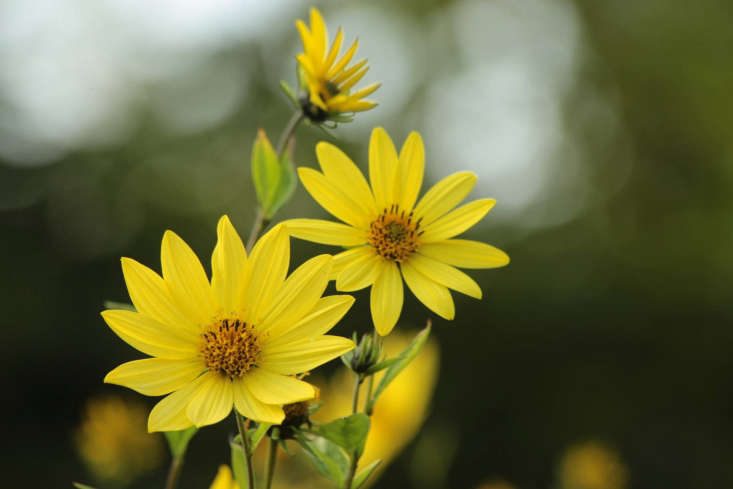Perennial vegetables come back year after year in edible gardens and if you adore plants that take care of themselves, give them a try.
Perennial vegetables combine the seasonal thrills of annual planting with the joy of survival after hibernation. Besides their poetic usefulness, they use fewer resources and require less maintenance than annuals. They produce beautiful flowers and improve soil. Their frost-hardiness means you can have early and late harvests. With a little investment of compost and cultivation, the benefits of perennial vegetables can be yours.
Here are five perennial vegetables to grow in an edible garden:
Asparagus

If you give asparagus an inch, it gives you miles. It takes from two to three years to fully establish, but asparagus provides a true delicacy in the early spring. Weeks before any other produce will emerge from winter’s cold, asparagus will pay you back for your patience. Snapped fresh off the vine, few vegetables make a better argument for backyard growing. If you grow it at home, you also get to enjoy the large, lacy green hedge of foliage that the mature plants produce. Behind a flower bed, lining a fence, or here and there in the garden, the foliage and small white flowers create a graceful, airy border. Plant the crowns about 12 inches apart from each other, and make sure each crown gets a handful of compost at planting time. A light harvest in the second year will reward you when the plants go gangbusters in their third year–feel free to harvest heavily for six to eight weeks at that time.
Rhubarb

Tangy, sweet relishes. Snazzy pickles. Classic pie. Rhubarb has outgrown grandma’s veggie patch. These ruby red stems are showing up on tasting menus all over, even starring in their own cocktails and sorbets last spring season. You can establish the gems best by planting crowns in the early spring, into a well-amended and weed-free spot. With some hearty applications of compost in the spring and fall, rhubarb should provide a bountiful harvest of the firm, young stalks. Don’t eat the leaves (poisonous!) and don’t panic if fall weather makes the plants appear to melt or mold back into the ground–it’s a natural cycle of hibernation. Make sure to give rhubarb a large plot of ground, and weed every spring. You can also divide the plants every few years–just dig up a crown that has at least three buds and replant elsewhere.
Sorrel

Cursed with a black thumb? Try sorrel. It’s so hardy that some farmers weed whack this lemony green when they harvest it. It’s almost impossible to kill–just plant seed or root cuttings thickly in a sunny spot. Water if it’s dry and hot, and watch it come back year after year. The bright green, small leaves taste the best for fresh eating in salads and they’ll be the first through the snow in the early spring. Later in the year, slightly larger, tougher leaves go well in soups, stews or blended into fines herbes or pestos. When the plant bolts, pinch off the flower heads, or let some go all the way to seed to produce more volunteer plants in the following spring. You can also divide the healthiest looking plants by the roots to spread them around your garden to give to friends.
Sunchokes

This native relative of sunflowers simply screams for a gourmet makeover in the vein of kale or cauliflower. The plant produces a prodigious amount of edible roots, which taste like a nutty, crunchy mix of turnip, potato, and radish. A light frost enhances their flavor and the bright yellow flowers are an added bonus. Simply plant a few roots in a sunny, remote corner of your vegetable patch or yard, water, and sit back. Give the plants plenty of space and look up some recipes before the bumper crop arrives. Sunchokes can be an invasive, tenacious foe if you have a small garden, as they propagate vigorously through the roots. Every few years, get some buddies to help you dig up the patch–the nutrient and taste value can be enhanced by moving the whole crop to a different area of your garden.
See Laura’s Tips on How to Grow Vegetables in the Middle of Nowhere and browse our archive for posts on Fruits & Vegetables.
Learn how to successfully design and create an edible garden with our Hardscaping 101: Edible Gardens guide.
Also, get more ideas on how to plant, grow, and care for various perennial plants with our Perennials: A Field Guide.







Have a Question or Comment About This Post?
Join the conversation